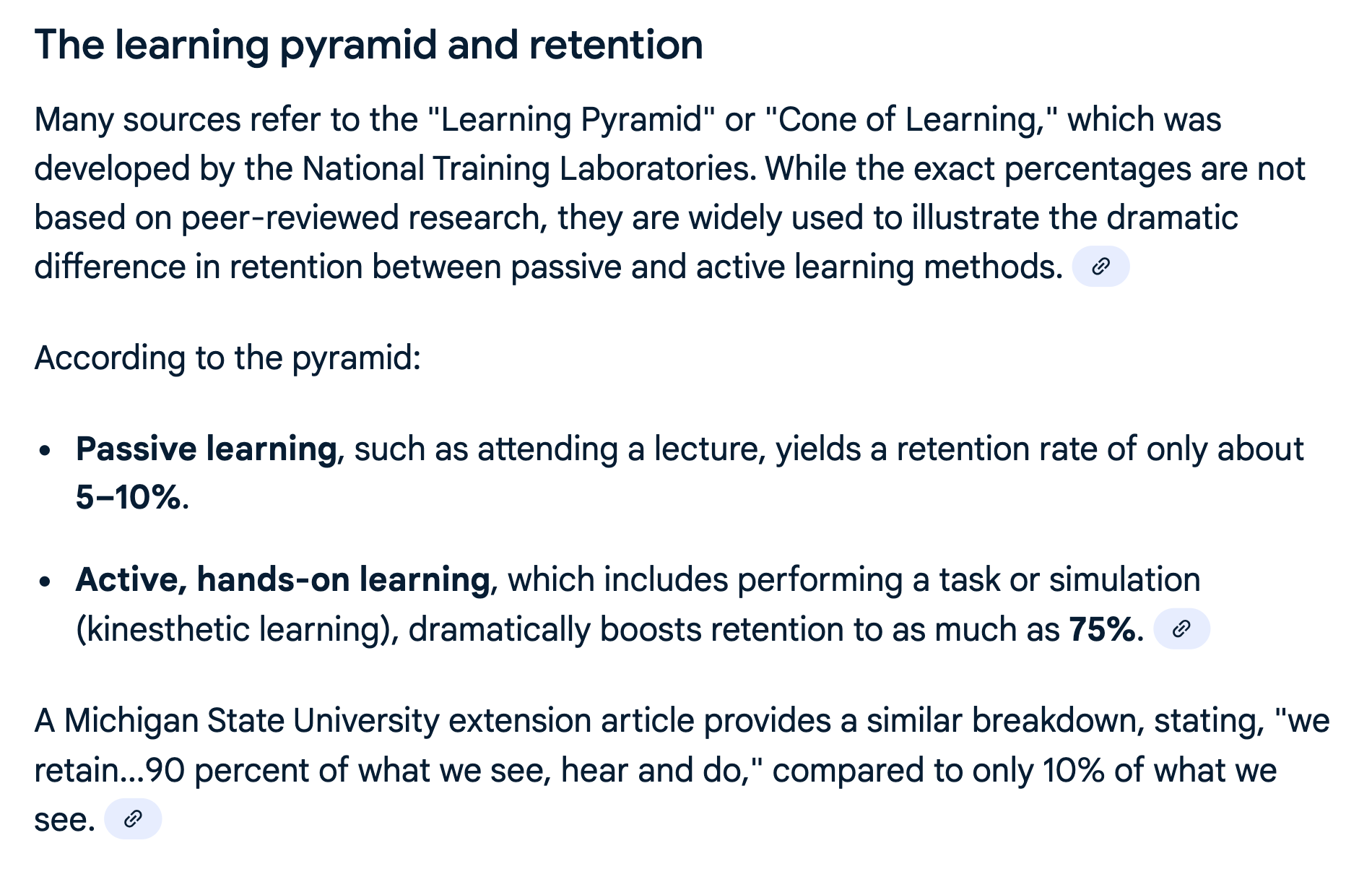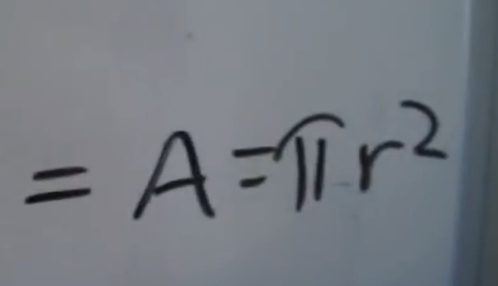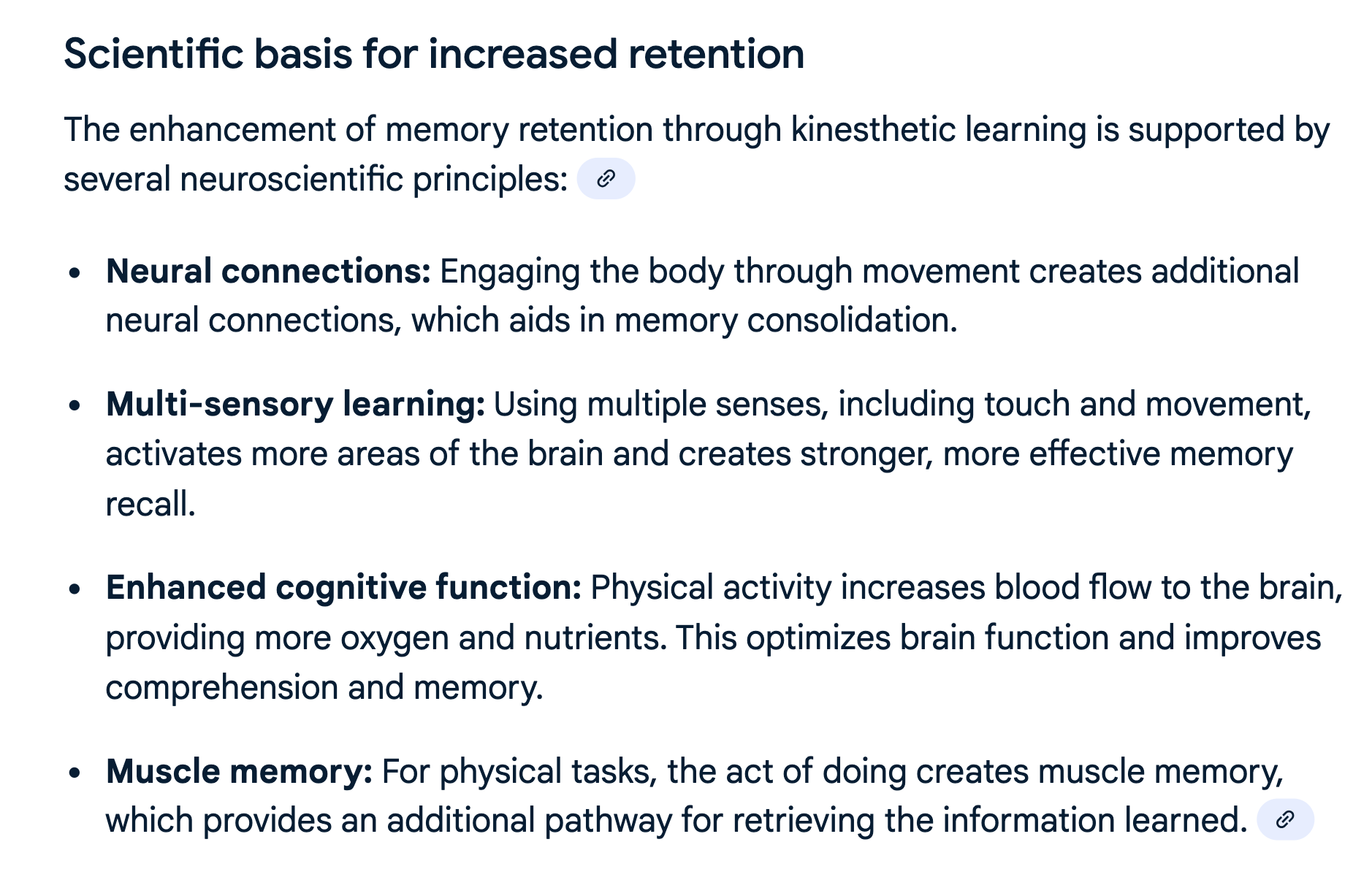Glossary
📘 Glossary of Terms (Work in Progress)
Absorbent Mind
A term used by Maria Montessori to describe the young child's ability to absorb knowledge and experiences from their environment. Brain state from birth to approximately seven years old when the brain is mostly making Delta and Theta Waves, Alpha waves are made on a regular basis starting around the age of seven. The absorbent mind corresponds to the grammar stage in the trivium and the Brain's Delta & Theta stage.
Age Appropriate Instruction / Learning
Mortensen Math "Combo Kit" brightly colored manipulatives representing one through nine (1–9), blue rods (10 or ×), red flats (100 or ײ). They help children understand place value and operations visually and tangibly through color-coded, proportional pieces.
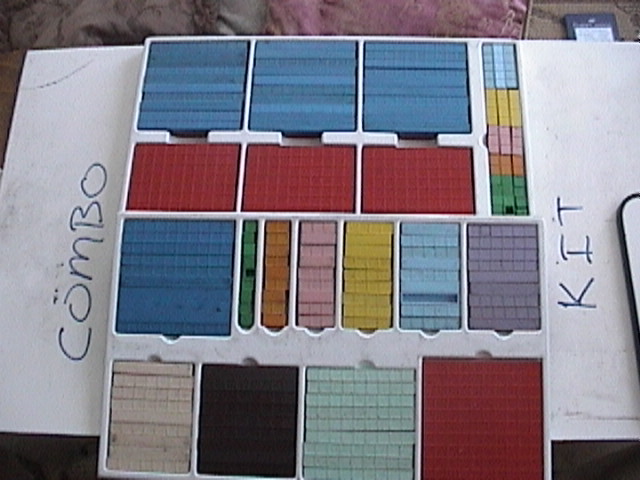 The Mortensen (more than) Math combo kit. Top tray and bottom tray.
The Mortensen (more than) Math combo kit. Top tray and bottom tray.Brainwave Stages
Different frequencies of brain activity associated with various stages of cognitive development, including delta, theta, alpha, beta, and gamma waves.
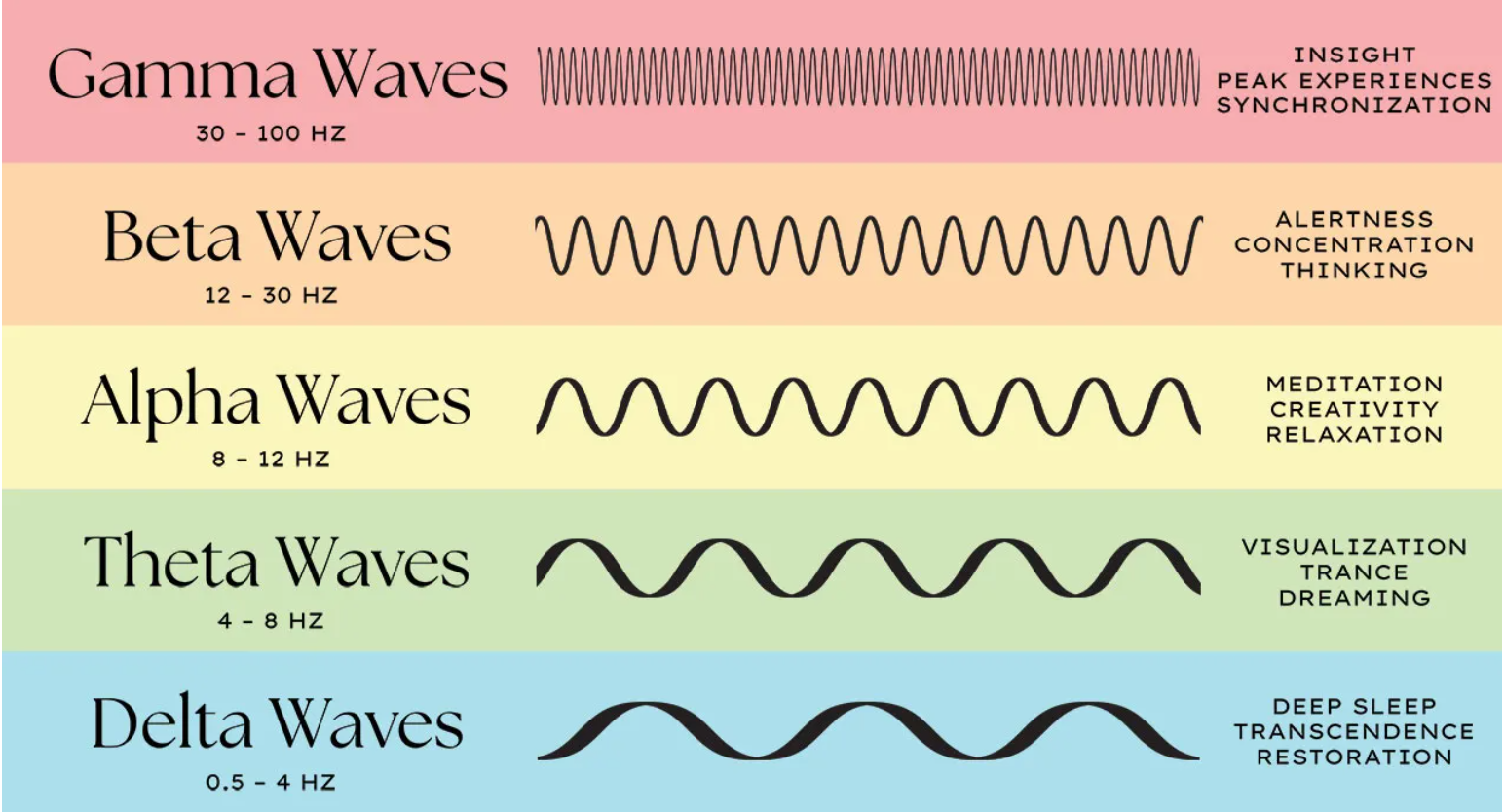
- Delta Waves: Brainwaves associated with deep sleep and unconscious processing (ages 0-2).
Theta Waves: Brainwaves associated with imagination, creativity, and learning (ages 2-6).
Alpha Waves: Brainwaves associated with calm alertness and logical thinking (ages 7-12).
Beta Waves: Brainwaves associated with focused attention and abstract thinking (ages 12-18).
Gamma Waves: Brainwaves associated with high-level cognition and synthesis (adulthood 18+). Brain finishes "forming and growing" around age 28. Brain can be rejuvenated.
Control Of Error
Materials are designed to help children identify and correct their own mistakes independently.
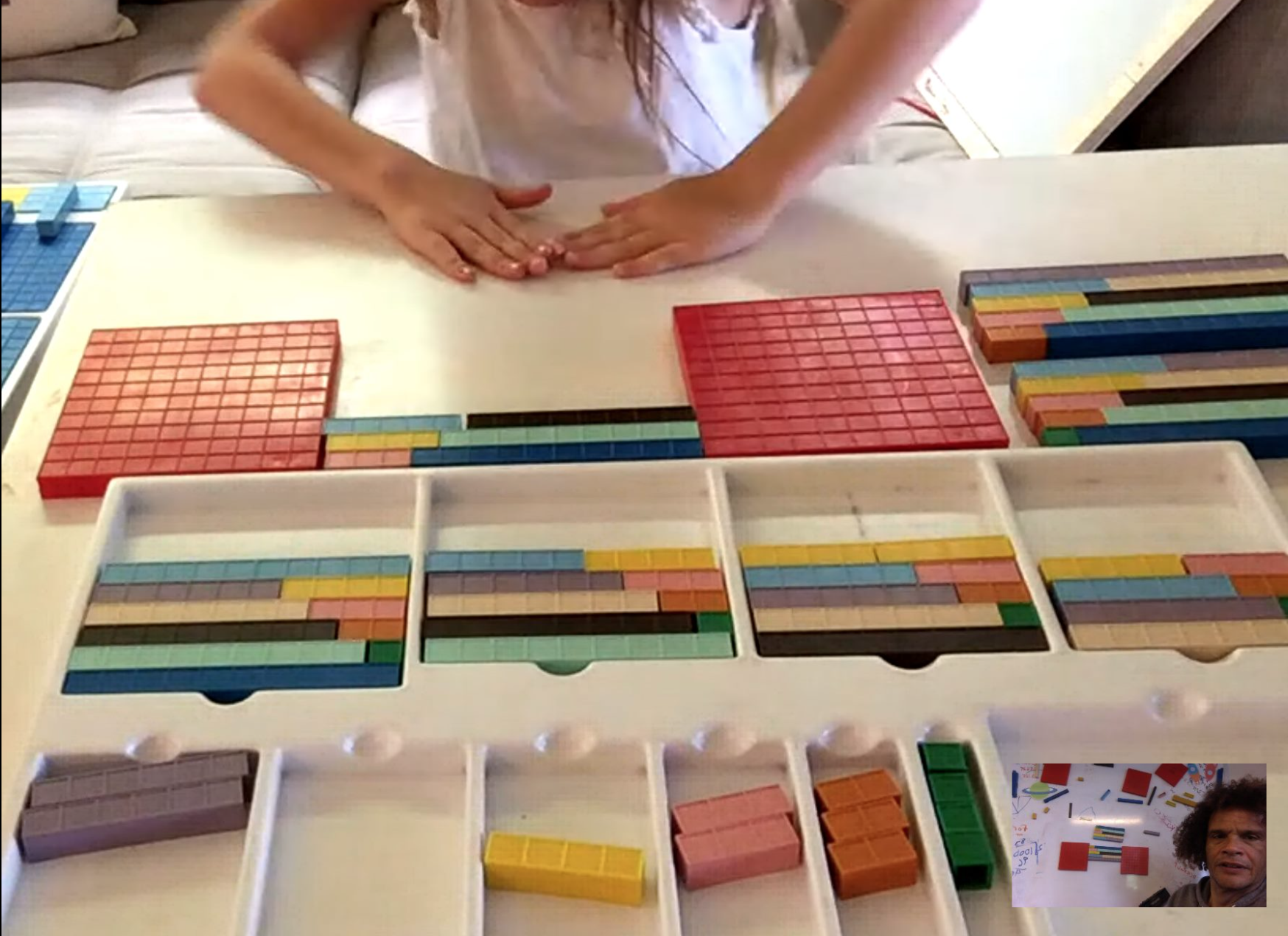 The trays themselves are used as tools for making tens. Control of error is visually obvious.
The trays themselves are used as tools for making tens. Control of error is visually obvious.Place the child i a situation where they can not fail. The child is placed in a position where failure is either impossible or easily recognizable and self correctable. The child needs no help from instructor to recognize errors.
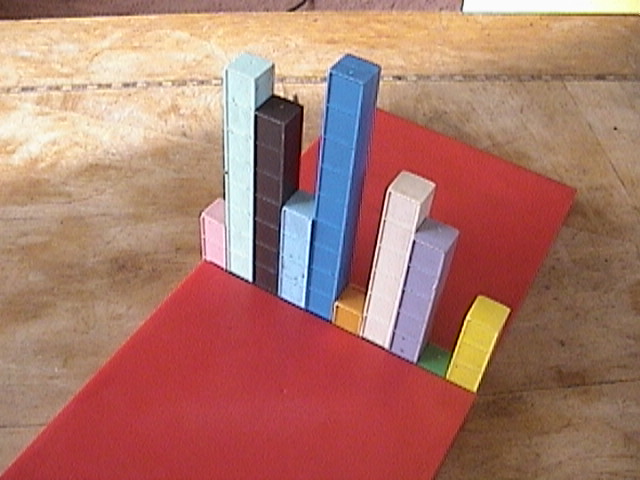 Building tens, a bit more of a challenge than in the trays but still have control of error.
Building tens, a bit more of a challenge than in the trays but still have control of error. Concrete–Pictorial–Abstract (CPA) Progression
A method where learners start with hands-on materials, transition to drawings, and finally to numerical symbols. Or as we like to say, "always start in the concrete".
It is not a way to teach, it is THE way to teach. All other methods that leave out the tactile are inferior.
Training exceprt.
The audio in the original vid this excerpt is taken from is much better. My trainings are multi-hour, but ask anybody: they go by quick. This is about a dozen minutes worth. Caution with module two hours can go by without you realizing it.
Developmentally Appropriate
Directed Discovery
DOE Department Of Education. A Federal for Profit taxable Corporation DUNS#944419592. Or one of 50 STATE OF taxable for profit corporations which are tasked with dumbing down American Citizens, and aiding in their naturalization into the US corporation as resident US citizens through omission and fraud. links not built yet
Economy Of Symbol
Fewest symbols possible to express an idea or expression. The mathematics is succinct & precise without superfluous and unnecessary symbols. All mathematical formulae are examples of economy of symbol from the area of a circle to Einstein's famous equation. This is mathematical rhetoric. The language is easy to read when you can see it. Those symbols represent a lot of math.
Directed Discovery
Children explore and uncover mathematical truths with teacher guidance, not direct instruction—supporting ownership of learning.
Degree of Difficulty
A way to scale lessons to a child’s readiness, gradually increasing complexity as mastery grows.
Teach it to others.
Exhibition of Mastery
A child shows understanding through independent use, creative problem-solving application to everyday life situations such as making change. Teaching concepts (math) to others. in a way that they understand to the point where they can teach it to others is the ultimate exhibition of mastery. Once you learn this information you are obligated to teach others. You get to learn it twice.
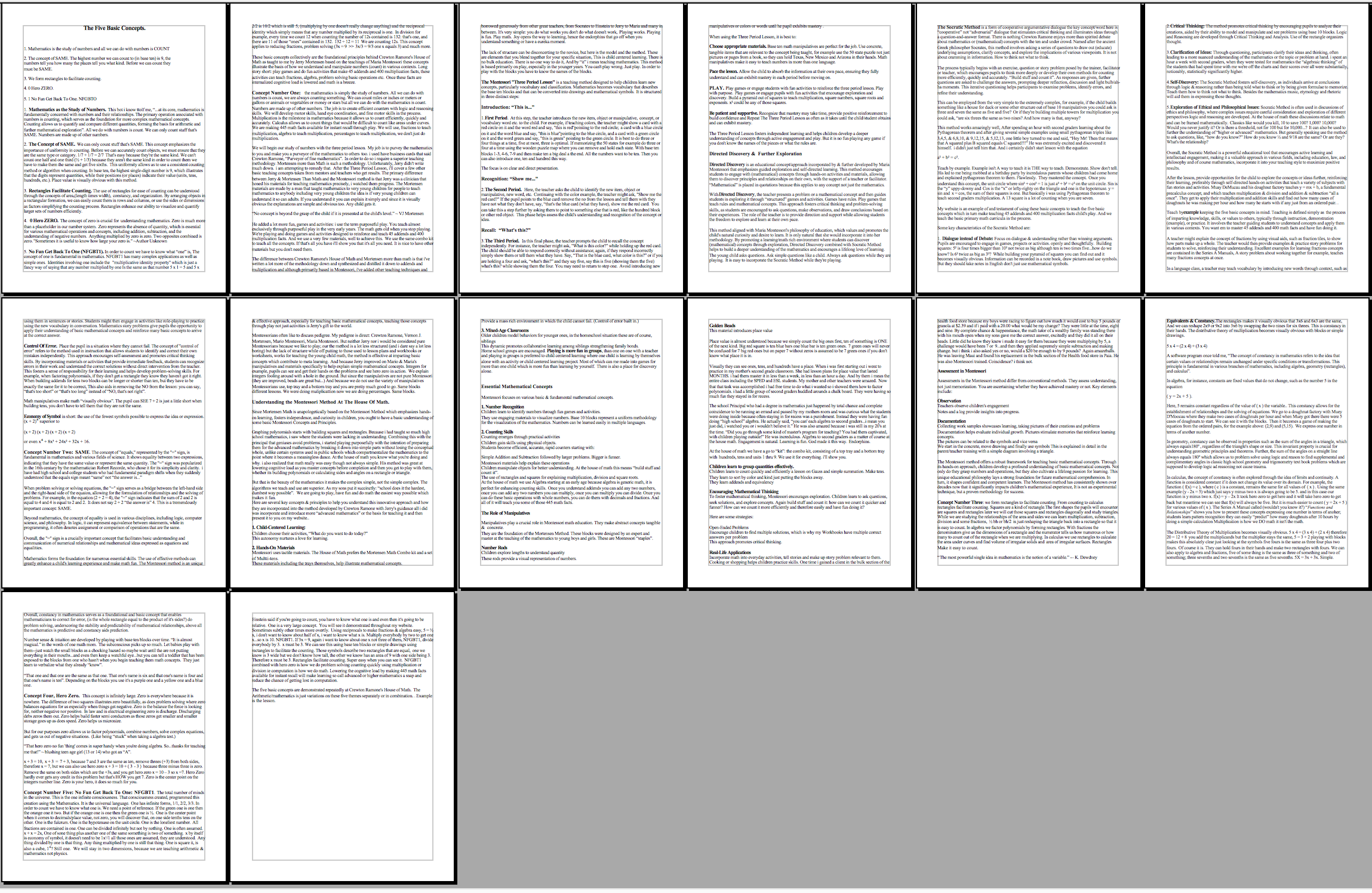
Etymology
You MUST know what the word mean. Knowing word history and origin along with suffix prefix and root words is essential.
Five Basic Concepts
Five Basic Concepts: A framework for understanding mathematical concepts, emphasizing the interconnectedness of mathematical ideas and relationships.
- Math is Counting
- The Concept of SAME – We must count like things.
- Rectangles Facilitate Counting
- Hero Zero (0)
- 1 – No Fun, Get Back to One (NFGBTO)
Golden Beads
Montessori decimal system material using gold-colored beads to teach units, tens, hundreds, and thousands.
Grammar Stage.
The first stage of development where language and information is acquired. The download mode for boys and girls aged from about 3 to 6. Corresponds with the delta and theta brain wave states.
The foundational stage of learning, focusing on symbol recognition, vocabulary acquisition, and concrete experiences (ages 3-6).
Hero Zero
A child-friendly way to teach the value and power of zero, especially in place value and problem solving. Zero is your hero because he does so much for you. WHen things get negative or when you need to discover x, zero is your hero.
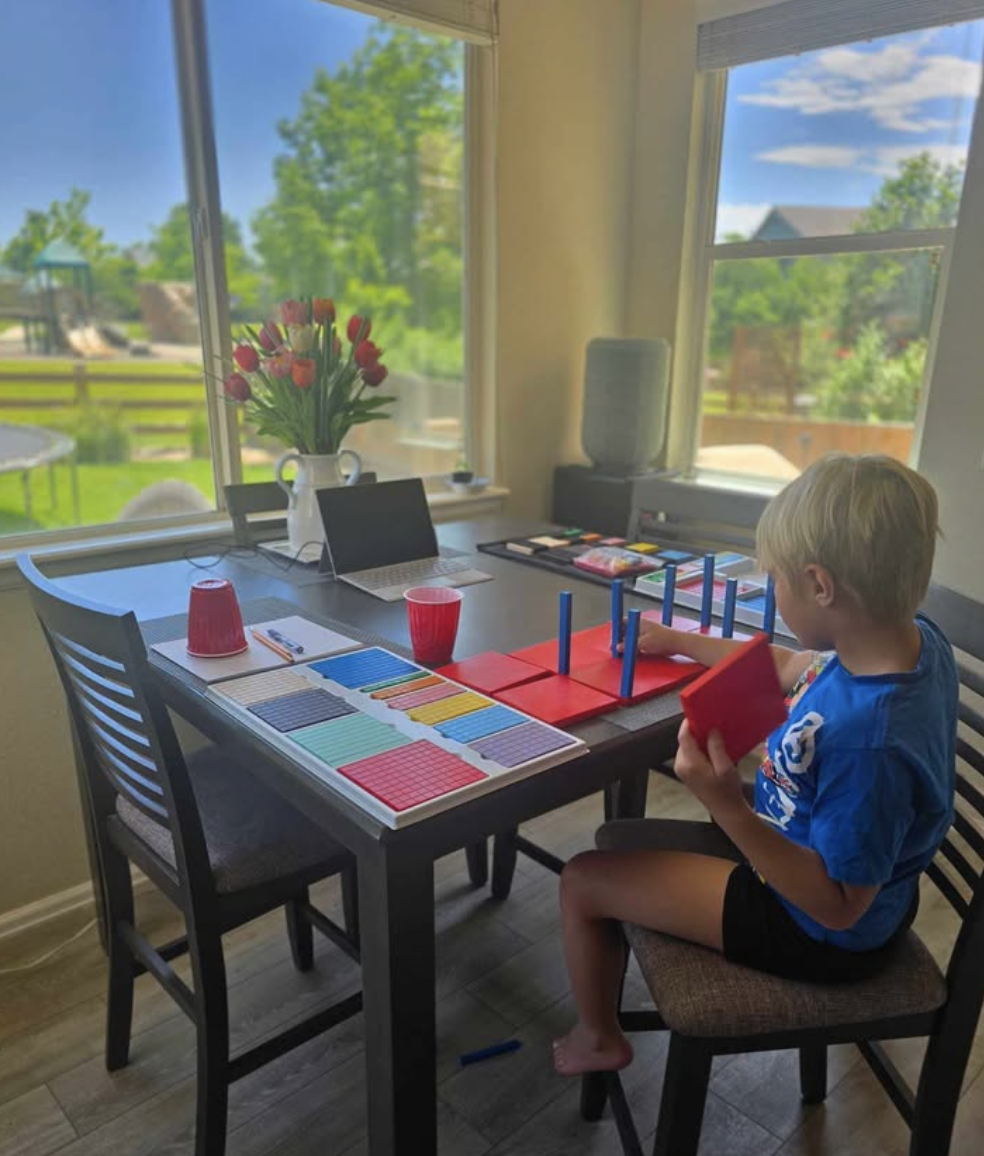 Mom made a beautiful math rich environment for her child. And two hours a week it's me on the screen.
Mom made a beautiful math rich environment for her child. And two hours a week it's me on the screen.Create math rich environment easily.
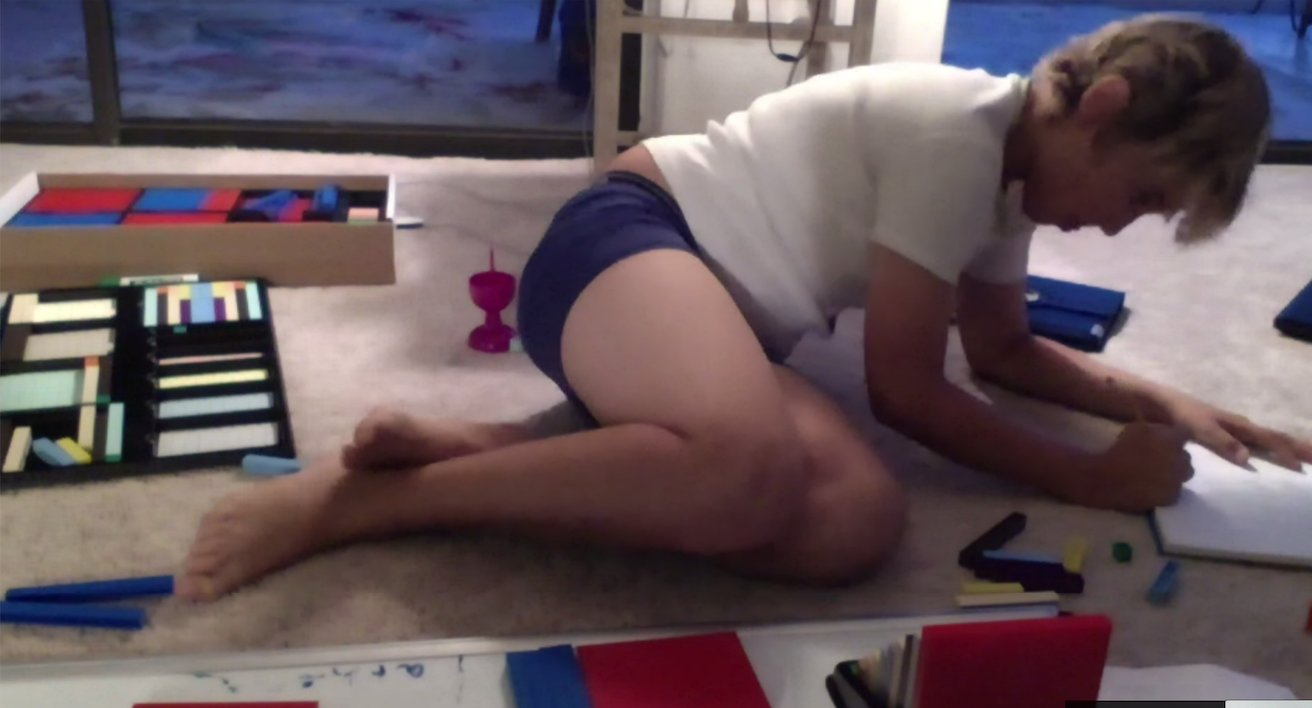 Surrounded by blocks. Surrounded by math.
Surrounded by blocks. Surrounded by math.Math Rich Environment
Similar to the Montessori structured, prepared environment Maria believed was best for learning. Giving the child freedom to learn within a structured framework where through socratic method and directed discovery the thirst for knowledge is ignited. A place where there are blocks and whiteboards and pens or pencil and paper generally the living room or kitchen floor or table top or wat have you.
Montessori Principles
Core ideas guiding Montessori education, including: respect for the child, prepared environment, self-directed activity, hands-on learning, mixed-age classrooms, sensitive periods of development, and intrinsic motivation.
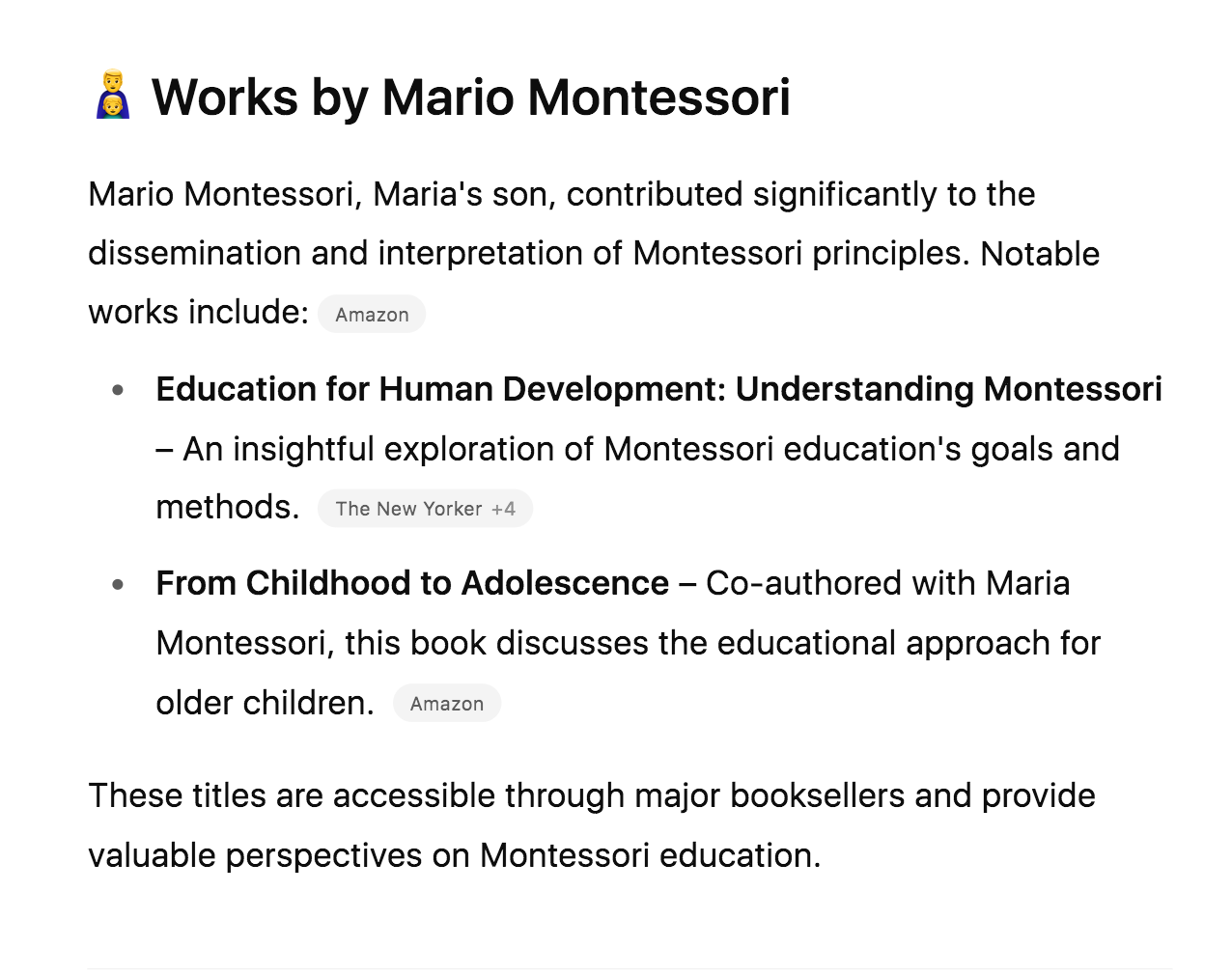
Number Sense
An intuitive understanding of numbers, relationships, and the effects of operations. The sense is greatly increased when students are exposed to manipulatives.
Pattern Recognition
Spotting and using regularities in numbers, such as multiples or visual arrangements, to deepen mathematical understanding.
Pedagogy
he art, science, or profession of teaching, including the methods, techniques, and philosophies used in educational settings. Montessori pedagogy values hands-on, child-centered, exploratory learning. The Mortensen Method is the Montessori Method focused on math.
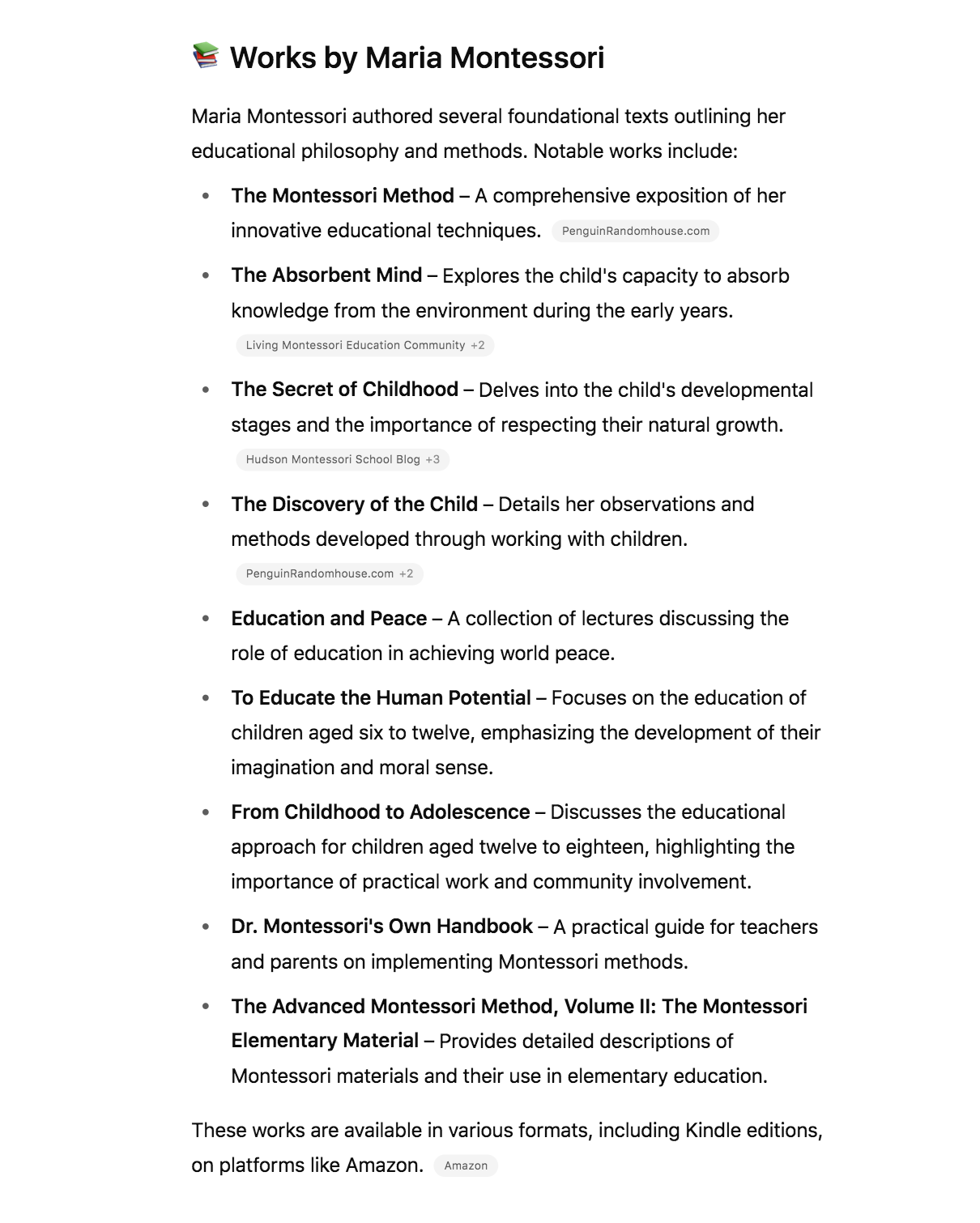
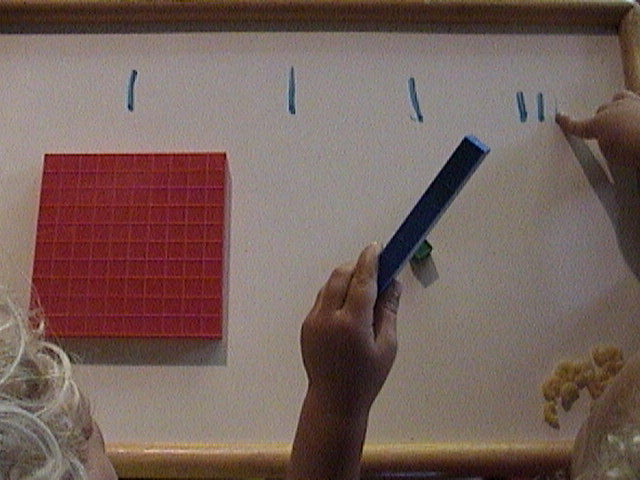 The tactile component is crucial. Maria proved it over one hundred years ago. Jerry proved it for 40 years, crewton Ramone for 35 and counting. Base Ten Blocks not optional. Note: these are toddlers and they are simply learning language.
The tactile component is crucial. Maria proved it over one hundred years ago. Jerry proved it for 40 years, crewton Ramone for 35 and counting. Base Ten Blocks not optional. Note: these are toddlers and they are simply learning language.The idea that a digit’s value is determined by its position in a number, foundational to understanding the base number system. In base ten 111 is one hundred, one ten, and one unit. In base two or binary it is 7, one four, one two, and one unit. x² + x¹ + x⁰.
Positive Reinforcement
Encouraging correct responses through praise, success, and enthusiasm instead of correction or punishment.
Prepared Environment
A structured learning space where everything is designed to support independent learning and developmental needs.
Rectangle Formation
Using blocks to form rectangles (arrays) that make arithmetic visually obvious and support conceptual learning.
Removal of “No” from the Lesson
A strategy to keep exploration positive—redirect mistakes without using negative language like “no” or “wrong.”
Scaffolding
Supporting learners at their current level and gradually removing help as they develop competence.
Self-Correction
As a result of control of error, self correction allows students to recognize and correct errors without hearing no when they try something incorrect in order to get more information on their way to the correct answer. Encouraging learners to independently find and fix mistakes through feedback embedded in materials has benefits later on in life where they experience reduced fear of failure and recognize it it a valuable part of success. If you let it.
Sensorial Learning
Engaging multiple senses to support deep learning—especially through touch, sight, and movement.
Skip Counting
Counting by intervals (e.g., by 2s, 5s, or 10s), laying groundwork for multiplication and division fluency.
Self Directed Learning
A Montessori Method for introducing new, concepts, language, or ideas:
1. Naming – “This is a ten.”
2. Recognition – “Point to the ten.”
3. Recall – “What is this?”
Add more as you go...
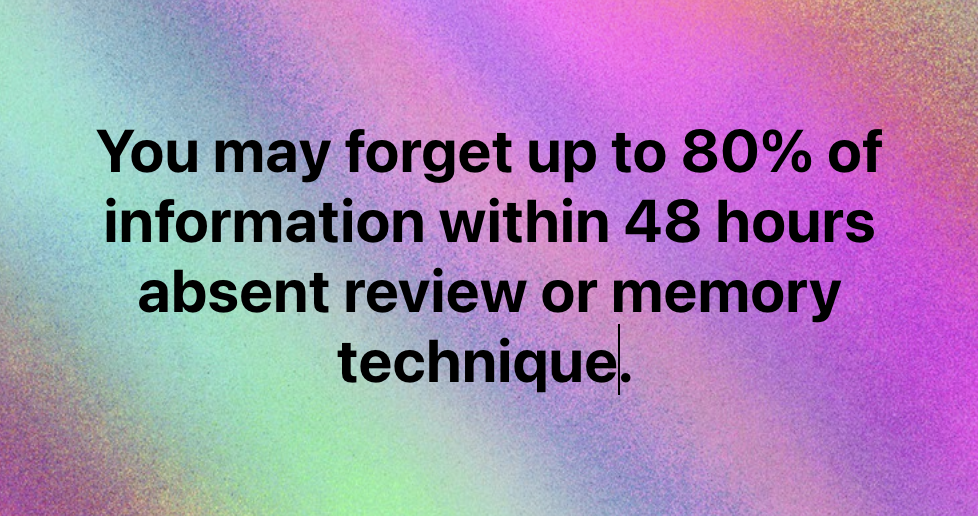 Adding the tactile component increases retention dramatically.
Adding the tactile component increases retention dramatically.Spaced Repetition
Repeated exposure to a word, a concept, or other information such the information is mastered and available for instant recall. Often coupled with vertical alignment where each repetition contains more and more information. FOr example counting sevens. First rep is just counting seven and how to make seven. 6 and 1, 5 and 2, 4 and 3...that's three sevens and we can count 7, 14, 21...
Next rep add seven to other numbers seven always wants three. Seven meets five and either seven takes three with two left which is one ten and two which is twelve OT five takes the five from seven because five wants five and there two fives and two which is twelve but probably not because five is afraid of seven because seven ate nine. But nine is affraid of seven because sometimes nine ate seven.
Spaced Review
Vertical Alignment
The deliberate sequencing of curriculum and skills from one educational level to the next, ensuring coherence and continuity across grades or advancing tiers, and mirroring the natural growth of the human mind.
Thus ensuring that math concepts are introduced early and then revisited and expanded in a logical sequence over time. Combine with degree of difficulty for baby steps from counting through calculus. Examples of vertical alignment regarding algebra:
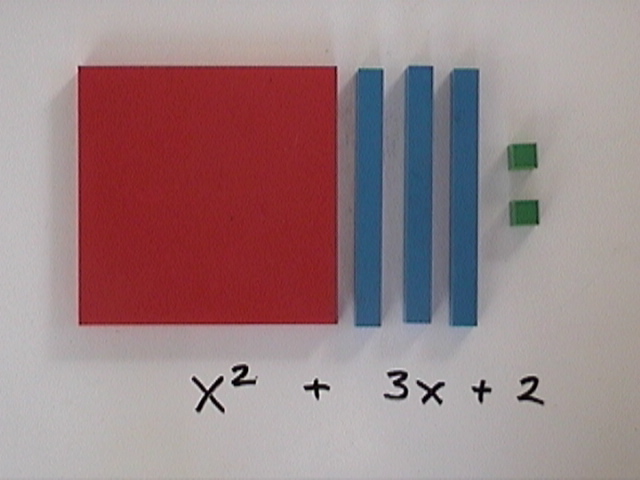
x² + 3x + 2
Beginner. 3 - 7
toddlers just build rectangles, count and multiply, they learn the names of the pieces. Grammar. link not built yet
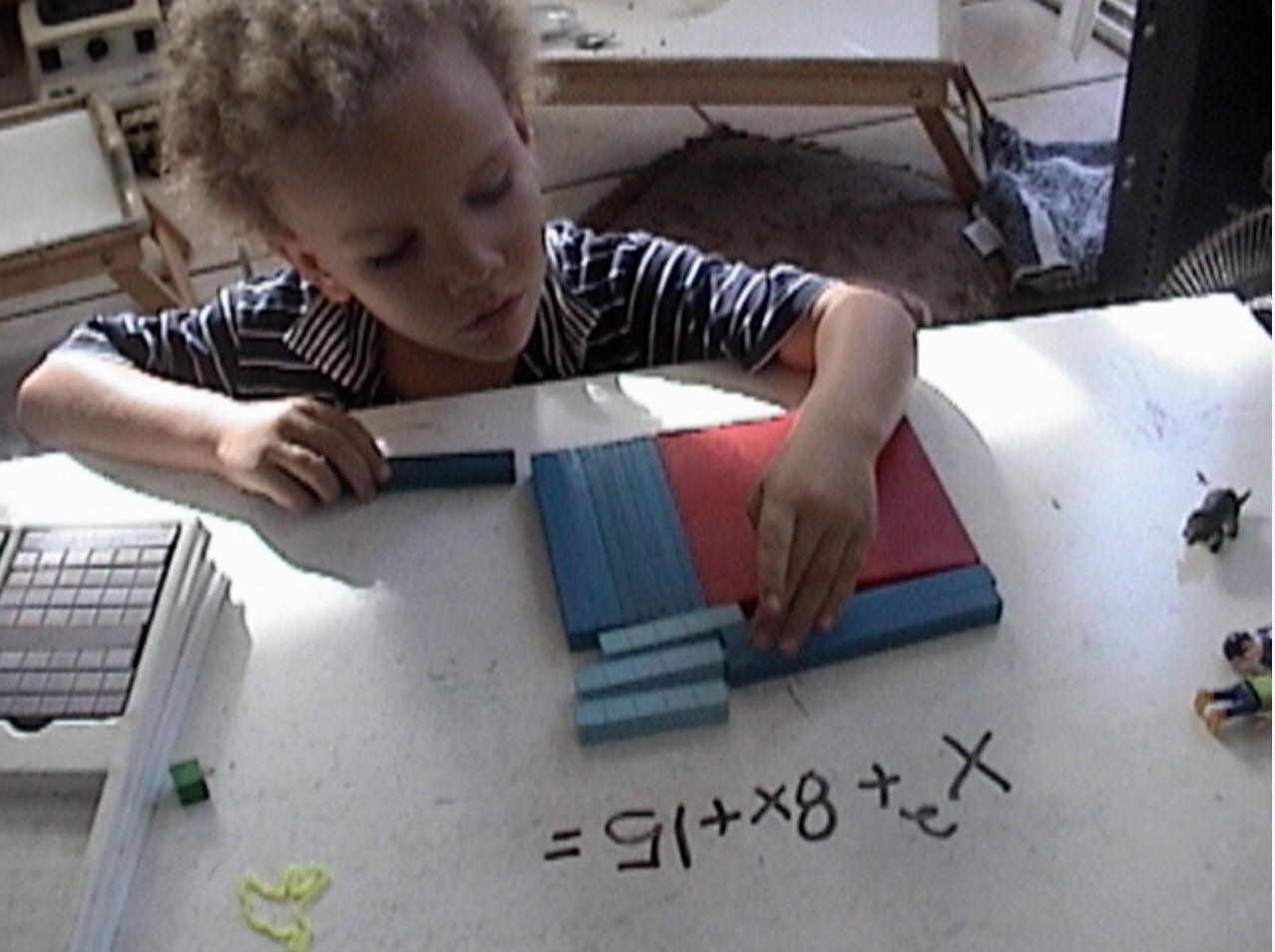
x² + 3x + 2 = 0
Intermediate. 7 - 12
we can factor and solve for x. We can divide, multiply and factor. We can evaluate for various values of x, (and have fun doing it). Negative expressions. Logic.
Add more "meaning" as they progress:

x² + 3x + 2 = 0
Allegedly Advanced 12 - 18+
we can graph, find x and y intercepts, convert to vertex form by completing the square after we've learned to square numbers ending in five. Negative expressions are easy too because they can see them. They know what the symbols represent. They no longer require the blocks the same way you no longer require a picture of a cow when decoding C-O-W. Rhetoric. link not built yet
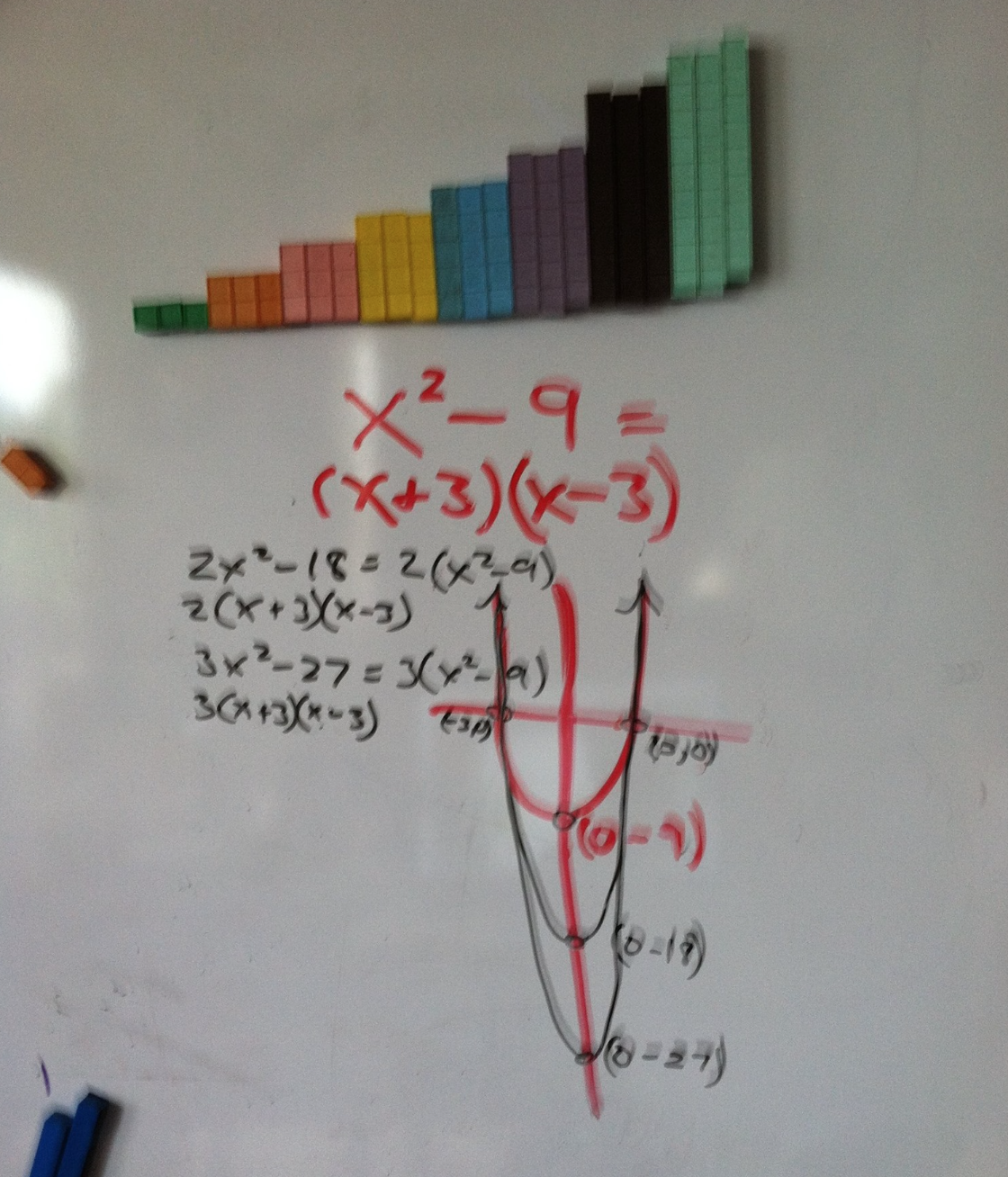 Playing with the difference of two squares. By now we no longer need the blocks but we use them to get here.
Playing with the difference of two squares. By now we no longer need the blocks but we use them to get here.Visually Obvious
A principle where materials or layouts immediately reveal the concept—no lengthy explanation needed.

Your second block of text...
Want to see more free pages & lessons & other free stuff on this site?
Consider a dollar a month.
For $1 per month (the lowest level subscription) you get access to
The
Super Duper Super Secret Facebook Page.
You'll find hours and hours of videos with base ten blocks and information you won't find anywhere else not even on this website there. i often post video tutoring sessions there. Other people post vids and links there too. Lessons cost the people doing them minimum $60.00 and hour. You can watch 2 to 10 of them a month for a dollar...Do the math. Currently 127 people are there. About half of them are active.
You basically get a support group for a buck a month.
Here's My Patreon:
https://www.patreon.com/CrewtonRamone
Note: from time to time the passwords change. Simply e-mail me for a new one or a new passport as the case may be. Annual passes are good for one year, lifetime passes are good for as long as the site remains up, (site has been up for eight years now). All single page passwords have lifetime renewal.
Add:
- Biology of Belief: A concept developed by Bruce Lipton, suggesting that our perceptions and beliefs shape our biology and influence our development.
- Epigenetics: The study of how environmental factors influence gene expression and development.
- Liberal Arts: A broad range of academic subjects, including language, mathematics, science, and philosophy, aimed at cultivating critical thinking and intellectual freedom.
- Logic Stage: The stage of learning that emphasizes reasoning, analysis, and problem-solving (ages 7-12).
- Math Rich Environment: A learning environment that is filled with mathematical materials, manipulatives, and opportunities for exploration and discovery, designed to foster a deep understanding of mathematical concepts and relationships.
- Mathematical Grammar: The study of mathematical symbols, definitions, and operations.
- Mathematical Logic: The study of mathematical reasoning, problem-solving, and proof construction.
- Mathematical Rhetoric: The art of communicating mathematical ideas clearly and effectively.
- Montessori Method: An educational approach developed by Maria Montessori, emphasizing self-directed learning, hands-on activities, and mixed-age classrooms.
- Quadrivium: A set of four liberal arts subjects (arithmetic, geometry, music, and astronomy) that build upon the Trivium.
- Rhetoric Stage: The stage of learning that focuses on effective expression, persuasion, and communication (ages 12-18).
- Trivium: A classical liberal arts education framework consisting of grammar, logic, and rhetoric stages.
Note: Mortensen Product Ordering Buttons Have Been Removed Due To Shipping/Inventory Issues. i basically DO NOT sell product for them anymore. Use eBay or other sources for base ten blocks. Check with Anna's Math Page.
Want to see more free pages & lessons & other free stuff on this site?
Consider a dollar a month.
For $1 per month (the lowest level subscription) you get access to
The
Super Duper Super Secret Facebook Page.
You'll find hours and hours of videos with base ten blocks and information you won't find anywhere else not even on this website there. i often post video tutoring sessions there. Other people post vids and links there too. Lessons cost the people doing them minimum $60.00 and hour. You can watch 2 to 10 of them a month for a dollar...Do the math. Currently 127 people are there. About half of them are active.
You basically get a support group for a buck a month.
Here's My Patreon:
https://www.patreon.com/CrewtonRamone
Passwords have changed as of July2023.
The superduper supersecret math page on Facebook is NOT FREE. Just sign up for a buck a month or buy books or a password.
People are shocked and amazed when they see how much they get for a password. $43.33 goes a long way at the house of math.
